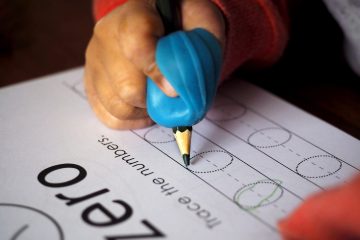As a mom of four, I know one thing for certain—no two children are the same (or even similar) despite their genetic codes. I’m sure many of you can relate. I wish I had a nickel for every time I heard a parent sigh in exasperation at her second or third child’s behavior or mannerisms, shaking her head and saying, “Boy, I wasn’t prepared for this.”

Well, just as children behave differently, they also learn differently too! Howard Gardner, renowned developmental psychologist and Harvard Education professor, points out that there are multiple intelligences that a child can demonstrate. The three most common modes of learning, or as educators like to call them “learning styles,” are as follows:
- Auditory: Children who are primarily auditory learners learn by hearing. They thrive when teachers give engaging presentations or read aloud to the class.
- Visual: Children who learn visually like to see things in black and white. Words on a dry erase board or flash cards make a lasting impression on them.
- Kinesthetic Learners: Children who are kinesthetic learners learn by doing. They like to observe things, hold them, touch them, and explore all of their intricacies. Science projects, math manipulatives, and pattern blocks create great learning experiences for these kids.
You’ve heard me rave about my child’s Kindergarten teacher before, and I can’t help but think of her as I write this post. Just three weeks into the school year, it’s nearly impossible for her to identify each student’s unique learning style, but even so, her instructional methods cover all the bases. Just take Katie’s homework sheet for the week, for instance. In order to learn the letters “M,” “S,” and “R,” she practices by looking at the letter and saying its sound (visual learning), writing the letter in the air with her finger (kinesthetic learning), and identifying the beginning sounds of words as I read them aloud (auditory learning). Genius!
Unfortunately, not all teachers are so well-versed or capable when it comes to accommodating their students’ learning styles. That’s why it’s up to you to advocate for your child and make sure her needs are being met, especially if you see signs that your child is struggling in school. Don’t know your child’s learning style? Take this simple learning styles quiz to find out.
Once you have a handle on how your child learns, make it a point to communicate this information to his teacher. Just be sure that you do it in a way that is helpful rather than critical. When teachers see that you’re genuinely trying to help them be successful (especially when it comes to educating your kid) rather than pointing the finger, then they’ll be much more open to possible accommodations and enrichment activities for your child.
If you’re lucky enough to have a vibrant kinesthetic learner like I do, then you probably know that they can be the toughest ones to accommodate. They often have a very hard time sitting still during lectures and presentations, an issue which poses a problem for two reasons: 1) these are not the types of instructional methods that help them learn best, and 2) they happen to be the primary means of instruction in many classrooms, especially at the secondary level. The good news is that there are many ways that you can help. Start by considering these strategies for helping kinesthetic learners succeed.
Whatever your child’s learning style happens to be, the most important thing you can do is practice patience with your child. If your child’s learning style is drastically different from your own, then it can be frustrating to watch them struggle with something that seems so simple to you. Try to remind yourself that just because it’s the way you learned, it doesn’t mean that it’s the right way for every learner. Then, take a deep breath, and try something new!


